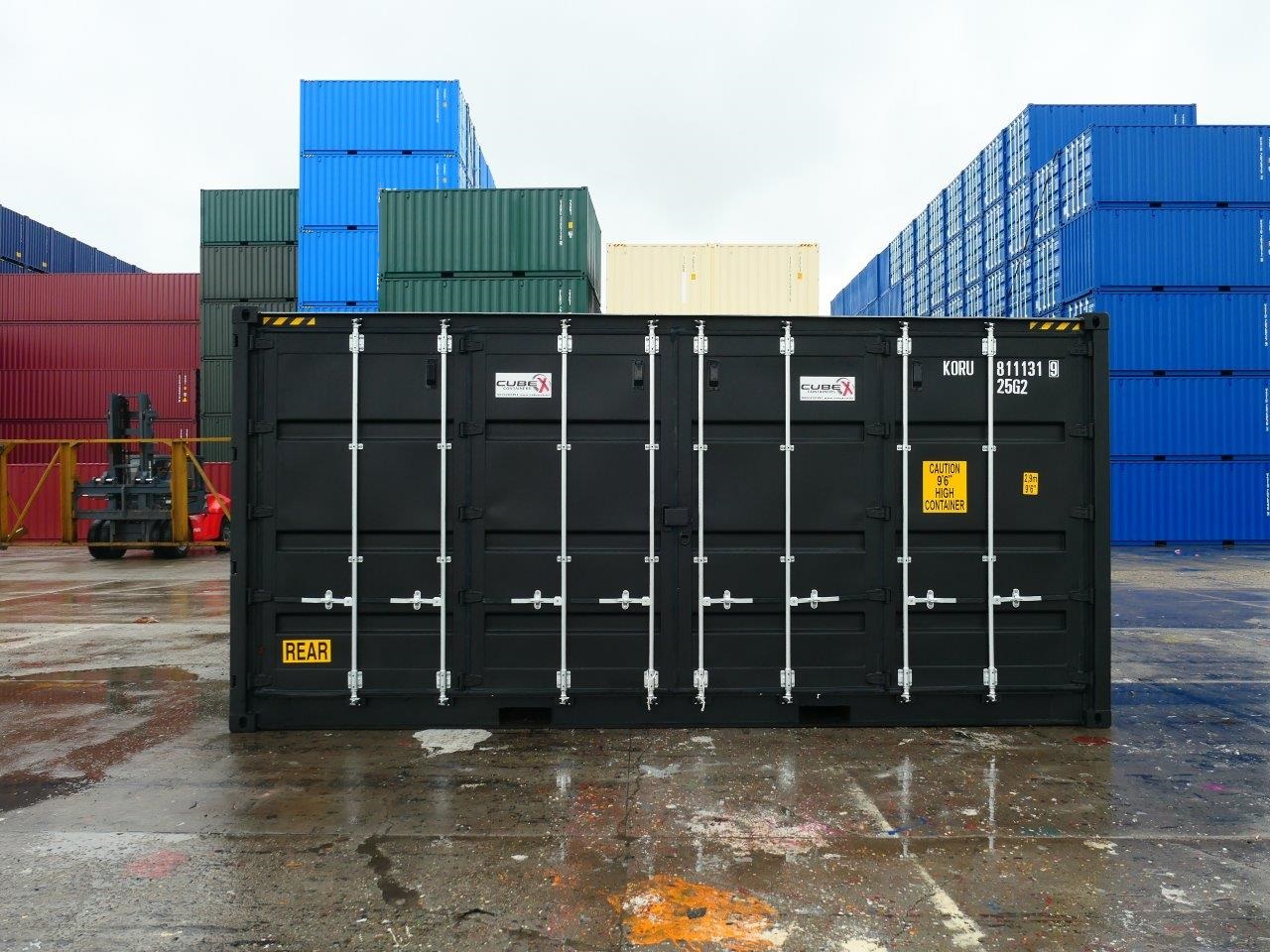Containers History
The unlikely story of shipping containers & how they are made.
Are you thinking of buying a Cubex Container and want to know how they are manufactured? Maybe you are just curious – either way we are glad to give you a rare insight into how shipping containers are made.
What makes the topic more interesting is just how much modern day shipping containers have impacted people’s lives globally. And the unlikely story of the man behind their creation.

Shipping containers have changed the world we live in and the goods we buy.
Before modern day shipping containers existed the idea of getting cheap goods from the other side of the world was almost unheard of.
In 1956 one man changed it all.
Malcolm McLean was a US based trucker who had big visions.
Malcolm McLean, the pioneer of modern day shipping containers, was alive at a time when freight transportation was incredibly inefficient.
Cargo was transported individually in sacks, barrels and small wooden crates which meant that the loading and unloading process took a very long time to complete.
Cargo was also susceptible to theft and damage during transportation.
Once the cargo was finally unloaded from the ship it was then a cumbersome process to transfer it onto trains or road vehicles.
All this meant the cost of transporting cargo was expensive and unreliable.
But that was the way it had always been done and the unions at that time were fiercely protective over the jobs of port staff – anyone wanting to implement change was faced with stiff resistance.
However, Mr McLean had a plan – one that was to change the world to the one we live in today.
His idea was that there should be standardized cargo container dimensions to enable bulk cargo to be transported from one place to another using multiple transport modes (including ship, train and truck) without the contents of the container ever needing to be handled.
This would dramatically decrease the time needed for loading and unloading as well as reducing theft and damage risk.
Massive strikes by port workers underlined the reluctance of many at that time to embrace this new way of doing things.
However, after fierce protests and negotiations the unions finally conceded and the modern day shipping container was born.
McLean used a converted WWII tanker called the ‘Ideal X”, which became the world’s first container ship and it set sail in 1956. It carried 58 shipping containers from New York to Houston.
Many other jobs were subsequently created by the explosion in trading that resulted directly from the change.
The rest is history as they say.
Today people around the world are using shipping containers for much more than simply shipping cargo including storage.
Shipping Containers are built to withstand the rough conditions of the open sea, which is what makes them so hardy and durable.
CORTEN STEEL
Containers are made from weathering steel or CORTEN steel (US Steel trademarked name).
COR-TEN refers to the two distinguishing properties of this type of steel: corrosion resistance and tensile strength). COR-TEN steel, is a group of steel alloys which were developed to remove the need for painting, and form a stable rust-like appearance if exposed to the weather for several years. COR-TEN resists the corrosive effects of rain, snow, ice, fog, and other meteorological conditions by forming a coating of dark brown oxidation over the metal, which inhibits deeper penetration and negates the need for painting and costly rust-prevention maintenance over the years. In simple terms the steel is allowed to rust and that rust forms a protective coating that slows the rate of future corrosion. Due to its ability to handle the weather it is often used for many outdoor structures, like building facades and bridges.
Construction : The steel panels are cut to the correct size and are then corrugated. This process gives the panels added strength. The panels are then welded onto reinforced steel beams (the undercarriage of the container). From that point, the doors and floor are installed and the container becomes a solid structure. Finally, the container is painted and primed with marine-grade paint, adding a final layer of protection.
Every single shipping container has it’s own unique number – similar to the number plate on your car. This allows containers to be tracked anywhere in this world while they are being used.
People across the world are finding interesting ways to utilise the humble shipping container in ways never before imagined, from storage to homes, offices, bars, greenhouses, advertising billboards, mancave, garden shed, woodshed, workshops, swimming pools, bach’s, sleepouts, portable ablution facilities, pop-up malls, coffee shops, chemical storage, walkways, wine cellars, student rooms, worker accommodation, showrooms, builders sheds, the possibilities of using the shipping container for something unique are endless. The only limit is your imagination.
